I have a set of well-log data. In the industry, there are specialist software to produce typical borehole log plots. Here is a simplified one:

The exciting things to note are:
- they are essentially facet plots
- Depth is the independent var, but is on the vertical axis
- several couplets of well-logs are plotted, and
- each log in a couplet may have different value ranges
Because this is a very traditional industry, I want to replicate closely the format of these plots with the software I have (I don't have the specialist stuff, being a student). I have used ggplot to get a little way along the path, but I don't know how to do some things. To kick things off, here are some example data and code:
log <- structure(list(Depth = c(282.0924, 282.2448, 282.3972, 282.5496,
282.702, 282.8544, 283.0068, 283.1592, 283.3116, 283.464, 283.6164,
283.7688, 283.9212, 284.0736, 284.226, 284.3784, 284.5308, 284.6832,
284.8356, 284.988), FOO = c(4.0054, 4.0054, 4.0054, 4.0691, 4.0691,
4.0691, 4.0674, 4.0247, 4.0247, 4.0247, 4.0362, 4.1059, 4.2019,
4.2019, 4.2019, 4.0601, 4.0601, 4.0601, 4.2025, 4.387), BAR = c(192.126,
190.2222, 188.6759, 188.6759, 188.6759, 189.7761, 189.7761, 189.7761,
189.2443, 187.2355, 184.9368, 182.5421, 181.882, 181.344, 180.9305,
180.9305, 180.9305, 181.5986, 182.4397, 182.8301)), .Names = c("Depth",
"FOO", "BAR"), row.names = c(NA, 20L), class = "data.frame")
library(reshape2)
library(ggplot2)
# Melt via Depth:
melted <- melt(log, id.vars='Depth')
sp <- ggplot(melted, aes(x=value, y=Depth)) +
theme_bw() +
geom_path() +
labs(title='') +
scale_y_reverse() +
facet_grid(. ~ variable, scales='free_x')
I don't know how to:
- combine two variables on one facet, and manage ranges successfully
- have value ranges as per diagram above, at the top of the facet
- plot labels as a separate facet. I have excluded the labels from the example data, as it was just confusing me.
Any help would be welcome.
